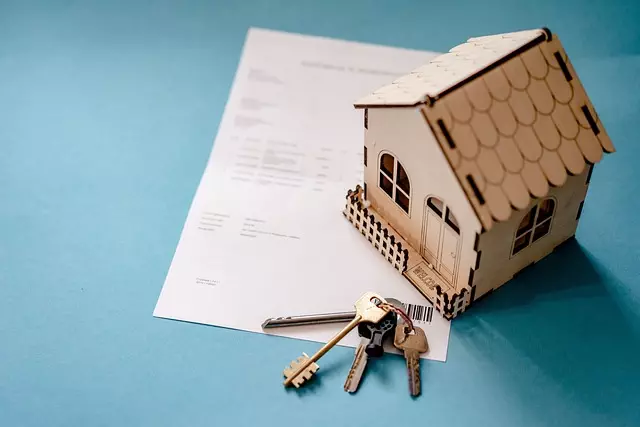Property and Casualty (P&C) insurance is essential protection for commercial building owners, covering diverse risks that can lead to significant financial losses. A comprehensive P&C policy includes property coverage, business interruption compensation, liability protection, and customizable options like flood or earthquake insurance. Key risk factors influencing premiums include location, building age, size, construction materials, and layout. Business owners should understand tailored coverage needs for structural damage, business interruption, liability, and valuable equipment, comparing providers to find the best balance of protection and cost. By managing high-risk events through targeted measures and proactive safety strategies, commercial building owners can rely on P&C insurance to minimize losses and ensure swift recovery from crises.
“Insurance for Commercial Buildings: Securing Your Investment in a Complex Market
Understanding commercial building insurance goes beyond basic coverage. It’s a strategic decision that involves comprehending various risk factors and selecting the right Property and Casualty Insurance (P&C) policy. This comprehensive guide delves into the intricacies of commercial property protection, exploring types of coverage, key influences on premiums, and effective risk mitigation strategies. From real-world case studies to tips for policy navigation, this article equips owners with knowledge to secure their investments.”
Understanding Commercial Building Insurance: A Comprehensive Overview

Commercial building insurance, often referred to as property and casualty (P&C) insurance, is a crucial safety net for business owners. It protects against potential financial losses stemming from various risks associated with commercial properties, such as damage or destruction caused by fire, natural disasters, theft, liability claims, and more. This type of insurance covers not just the physical structure but also valuable business assets, inventory, and equipment.
A comprehensive P&C insurance policy for commercial buildings typically includes several key components. These include property coverage, which insures against damage or loss to the building itself; business interruption coverage, designed to compensate for lost income during repairs or rebuilding; liability coverage, protecting against claims of bodily injury or property damage to others on the premises; and various optional coverages tailored to specific risks faced by businesses, such as flood, earthquake, or employee dishonesty. Understanding these elements is essential for business owners to ensure they have adequate protection in place.
Types of Property and Casualty Coverage for Commercial Properties

Commercial buildings often come with a diverse range of risks, which is why Property and Casualty Insurance is a crucial aspect of their ownership. This type of insurance provides financial protection against potential losses related to both the structure of the building and its contents. The coverage typically includes several key components.
One of the primary types of coverage is Building or Structure Coverage, which protects the physical building from damage or loss due to risks like fire, storms, theft, and vandalism. Additionally, Contents Coverage safeguards the valuable assets inside the commercial property, including furniture, equipment, inventory, and technology. This ensures that businesses can recover or replace these essential items if they are damaged or stolen. Many policies also offer Liability Protection, which shields business owners from financial responsibility for injuries sustained on their premises or any legal issues arising from claims of property damage.
Assessing Risk: What Factors Influence Commercial Building Insurance Premiums?

Assessing risk is a critical component in determining insurance premiums for commercial buildings. Several factors influence these rates, with each property’s unique characteristics playing a part. Location is a key aspect; buildings in areas prone to natural disasters like earthquakes, hurricanes, or floods carry higher risks, leading to more substantial premium costs. For instance, properties near bodies of water might require additional coverage for potential flood damage.
The physical attributes of the building itself are equally important. Older structures may need higher premiums due to potential structural issues and outdated safety features. Size and construction materials also come into play; larger buildings with complex layouts or those made from specific materials known for vulnerability to certain hazards will likely have elevated insurance costs. Property and Casualty Insurance for Commercial Buildings considers these factors, ensuring that each policy is tailored to reflect the unique risks associated with the property.
Choosing the Right Policy: Navigating Options for Commercial Owners

Choosing the right property and casualty insurance policy is a crucial step in protecting your commercial building investment. As a business owner, understanding the various coverage options available is essential to ensuring you’re adequately insured against potential risks. Commercial buildings face unique challenges, from natural disasters to liability claims, so a tailored insurance plan is key.
When selecting a policy, consider factors like the age and construction of your property, location-specific risks, and the value of your assets inside. You’ll want to ensure that your policy covers structural damage, business interruption, liability for injuries on premises, and valuable equipment. Comparing different providers and policies will enable you to find the best fit, offering the right balance of coverage and cost for your specific commercial needs.
Common Exclusions and How to Mitigate Them

Commercial building owners often need to understand property and casualty insurance policies thoroughly, as these can vary widely in their coverage and exclusions. Common exclusions include damage caused by floods, earthquakes, or war. However, many of these risks can be mitigated through additional coverage or preventative measures. For instance, while standard policies typically exclude flood damage, commercial policyholders can purchase separate flood insurance to protect their property. Similarly, seismic activity is often excluded, but retrofitting and reinforcing structures can reduce potential earthquake-related losses.
To mitigate other common exclusions like vandalism or malicious destruction, implementing security systems and 24/7 surveillance can deter such incidents. Regular maintenance and up-to-date records of repairs can also help in claiming for wear and tear or accidental damage. Additionally, ensuring that all employees are trained in safety protocols and emergency procedures can minimize risks and potential losses covered under the policy.
Case Studies: Real-World Examples of Commercial Building Insurance Claims

When evaluating the importance of insurance for commercial buildings, case studies offer valuable insights into real-world scenarios where Property and Casualty Insurance has played a pivotal role. Consider a recent instance of a high-rise office complex that suffered extensive damage due to a severe storm. The subsequent claim highlighted how comprehensive coverage, including protection against natural disasters, ensured the financial stability of the building owners and enabled swift reconstruction efforts.
Another compelling example involves a retail space that experienced a fire, causing significant structural damage and loss of inventory. The insured business was able to access immediate financial support through their Property and Casualty Insurance policy, facilitating the process of rebuilding and restocking. These scenarios demonstrate how tailored insurance solutions for commercial buildings can mitigate risks and provide businesses with the resilience needed to navigate unforeseen challenges.
